
Air Show Report : MCAS Yuma Air Show 2019
MCAS Yuma Air Show 2019
George Karavantos reports back from U.S. Marine Corps Air Station Yuma in Yuma, Arizona, having attended the 2019 Yuma Air Show.
On March 8-9, 2019, one of the most interesting US airshows took place. This year's MCAS Yuma Air Show was the 90 year celebration of the Marines’ base.
On Friday March 8, the event consisted of a “Twilight Show” in the late afternoon including a short flying display program of roughly 2 hours, ending with a firework show. The flying display of the Twilight Show included the A-10 Demo Team, a F-35B, a HH-1N, the Commemorative Air Force’s “Tora Tora Tora” display, the Shockwave Jet Truck, and the Yellow Thunder team.
On Saturday March 9, the airshow started early in the morning and had a much bigger program. In addition to the previous day's performers, the flying display included an AV-8B Harrier II, a MV-22B Osprey, the P-51D / A-10 Thunderbolt II Heritage Flight, and the MAGTF Demonstration along with a DACT simulation.
The first military aircraft demonstration of the “Daylight Show” was the McDonnell Douglas AV-8B Harrier II. Powered by a single 23,500lbst Rolls-Royce Pegasus engine with four variable nozzles, the Harrier was and still is one of the most valuable assets of the Marine Corps’ inventory. The Marines’ inventory counts 34 AV-8B Harrier II Night Attack versions and 74 AV-8B Harrier II+ with its Raytheon APG-65 multi-mode radar and 16 TAV-8B trainers. 110 aircraft are operated by 5 squadrons with 16 AV-8B each, one fleet reserve squadron with 13 AV-8B and 13 TAV-8B two-seaters, and one test squadron with 4 AV-8Bs assigned. Two squadron are based at MCAS Yuma; VMA-311 “Tomcats” Squadron and VMA-214 “Blacksheep” Squadron. The demonstrated aircraft belonged to the latter.
Right after the predominantly vertical flight demo of the Harrier, it was the time for the other STOVL aircraft of the Marines; the new F-35B Lightning II, operated by the VMFA-122 “Flying Leathernecks” Squadron. The F-35B version is the short take-off and vertical landing (STOVL) variant of the aircraft. Similar in size to the A variant, the F-35B sacrifices about a third of the aircraft's fuel capacity to accommodate the vertical lift propulsion system. The Marine Corps plans to procure 353 F-35B and 67 F-35C models to replace current inventories of both the F/A-18 Hornet (A, C and D-models) and the AV-8B Harrier II with the transition to be completed in 2031 Current plans will see the final AV-8B squadron transition in FY27.
Somewhere between the loud noises and the vertical take-offs, the classic but still trustworthy Bell HH-1N Iroquois performed a Search & Rescue demo. The HH-1N is the twin-engine variant of the UH-1H Iroquois and is also known as the “Twin Huey”. Despite its age, this helicopter can still provide valuable services .
One of the many highlights of the show was also the MV-22B Osprey of the Operational Test and Evaluation Squadron VMX-1. The Osprey is the world's first production tiltrotor aircraft, with a three-bladed proprotor, turboprop engine, and transmission nacelle on each wingtip. It is designed to combine the functionality of a helicopter with the long-range, high-speed cruise performance of a conventional turboprop aircraft. The MV-22's two Rolls-Royce AE 1107C turboshafts are connected by drive shafts to a common central gearbox, so that one engine can power both proprotors in case an engine failure occurs.
The next act was a scenario of dissimilar adversary combat tactics (DACT) with six F-5N fighters of VMFT-401 against one AH-1Z Viper and one UH-1Y Venom. Both these helicopters are upgraded developments of the legendary and battle proven AH-1 Cobra and UH-1 Iroquois respectively. The VMFT-401” Snipers” Squadron is the Marine Corps’ only Adversary or “Aggressor” squadron. It utilizes 11 F-5N aircraft, which were acquired from the Swiss Air Force back in 2006. The squadron was already using the type but acquired these airframes with fewer flight hours, in order to withdraw its remaining older ones. These aircraft wear some unique liveries that are like those used by some famous Russian fighters like the Su-30 and Su-35. The Snipers’ mission is to provide instruction to Active and Reserve Fleet Marine Forces and Fleet squadrons through Dissimilar Adversary Combat Tactics training.
The A-10 Thunderbolt II Demo Team returned last year after its 7-year absence from the airshow scene. Its appearance at the Yuma Airshow was its first on its calendar for 2019. The A-10 Demo Team utilizes two A-10Cs (the second is being used as a backup) of the 355th Wing based at Davis-Monthan AFB in Arizona. The demonstration profile included combat manoeuvres of constant changes in airspeed, altitude, heading, and bank angle, along with many pyrotechnics to simulate the use of its weapons. The A-10 Thunderbolt II was the first U.S. Air Force aircraft specifically designed for close air support of ground forces. The A-10 Thunderbolt II is an ugly beast (thus its nickname: Warthog), but the "hog drivers" think highly of it, because of its capacity to remain flying after sustaining damage from ground fire.!
At the end of its display the Warthog performed some low passes in formation with a P-51D presenting the USAF Heritage Flight. The USAF Heritage Flight was first established in 1997 to celebrate the 50th Anniversary of the United States Air Force. It incorporates fighter types from World War II, the Vietnam War, the Korean War and other conflicts in which the USAF has been involved. The team currently has nine civilian pilots qualified to fly vintage warbirds in formation with the USAF single-ship demonstration teams.
A nice air ballet was displayed with perfection by two Canadian Harvards. The team is called “Yellow Thunder” and these two Harvards are being flown by two brothers, David and Drew Watson.
Another great highlight of the show was the Marine Air-Ground Task Force (MAGTF) Demonstration. During this simulated MAGTF mission, two ground vehicles were receiving heavy fire from the enemy and requested assistance from the air. One AV-8B and one F-35B were present in the area and provided assistance with raids against the enemy’s forces. Later on, one CH-53D Sea Stallion, escorted by one UH-1Y and one AH-1Z, brought in some Marine Raiders, who provided cover while the aircraft continued to strike from the skies above.
The final act of the show came from a very distinguished airshow team, the "Tora Tora Tora". "Tora Tora Tora" is the Commemorative Air Force's re-enactment of the Japanese attack on Pearl Harbor that signalled the beginning of the American involvement in the second World War and is comprised of up to six replica Japanese warbirds like the A6M, D3A, and B5N . "Tora Tora Tora" began in 1972, when six replica aircraft used in the movie of the same name were donated to the CAF. The Gulf Coast Wing requested assignment of the aircraft and began developing an act for presentation at air shows. The act debuted at the Galveston Air Show on June 25, 1972. By 1977, the Tora act had gained national exposure. From 1978 the Tora flight began to make international appearances in Canada and Mexico. In 2000 the Tora aircraft and pilots participated in the filming of the Disney movie "Pearl Harbor".
I intentionally left one of the most noteworthy acts of the show for the end. The Chris Darnell's jet engine equipped truck, the “Shockwave”. This truck is equipped with not one, but three Westinghouse J34-48 jet engines and holds the record of the fastest truck on earth by achieving speeds up to 376 miles per hour (605 km/h). The truck is capable of completing a quarter mile in 6.63 seconds. Although it is not an aircraft, it was one of the most spectacular acts of the show and I enjoyed it very much.
The conclusion is that the MCAS Yuma Air Show is quite a unique event since the visitor can see all the hardware in today's Marines’ inventory, which comprises some remarkable aircraft. From the legendary Harrier II to the state-of-the-art Lightning II and from the classic Iroquois to the technologically advanced MV-22.
Overall, the 2019 Yuma Air Show was a wonderful showcase of the versatile assets of the Marine Corps. I really enjoyed being part of this unique fiesta and for a while I got a taste of the Marine spirit and patriotism that these guys live and breathe . Well done, Marines! Oorah!
Report and photos by George Karavantos ( view portfolio )
Last Modified: 5 May 2019
Update log:







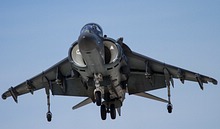






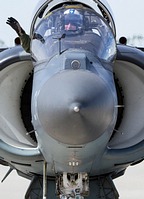


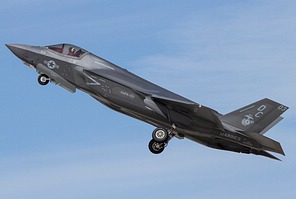






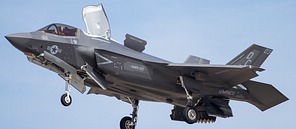





















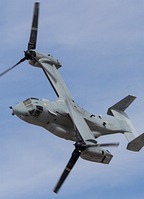








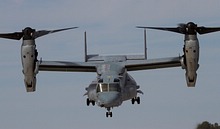




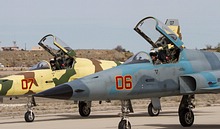




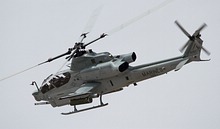











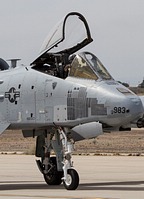








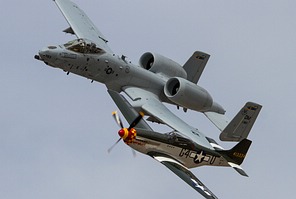

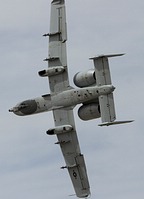
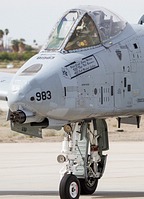
















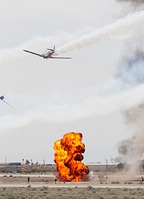



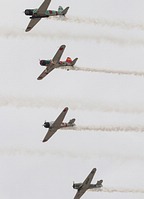







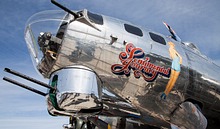
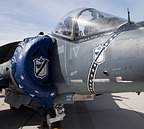
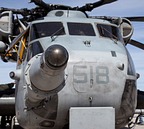
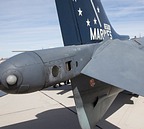
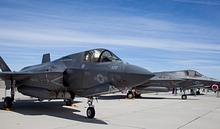
 Back to Index
Back to Index